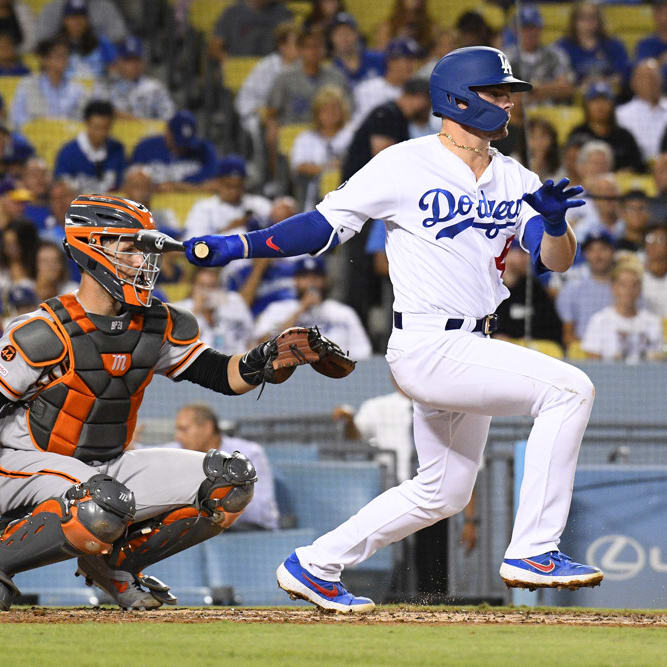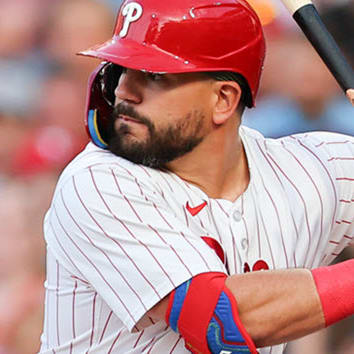This article is part of our The Wheelhouse series.
I have never cashed in the NFBC Main Event.
It's something that stings every summer when I realize that there is simply too much ground for my team to make up to land in the top three.
Experience in the format helps, as the importance of a balanced roster is a costly lesson to learn when you fall short in saves or steals because you failed to invest enough in players capable of reliably delivering in those categories (remember, no trades). There is also an aspect of FAAB management that is unique to the NFBC, and roster construction -- thanks to twice-weekly adjustments for hitters -- is slightly different than the other leagues I play in.
One thing I've always liked about the NFBC is the Kentucky Derby Style (KDS) draft slot selection. It's the best way to handle snake draft orders, since it allows owners to plan for a roster foundation they like a bit more in one spot v. others.
There was an emphasis on early-middle draft positions over the back-end of the first round in the NFBC Ultimate draft this season when that KDS process went down a couple weeks ago, but I felt like the value I could get at the end of the round with back-to-back picks at 15th and 16th overall was worth pushing that position up higher in my order of preferences.
Chris Liss did a lot of research determining player dollar values based on the Steamer projection system and the tendencies of
I have never cashed in the NFBC Main Event.
It's something that stings every summer when I realize that there is simply too much ground for my team to make up to land in the top three.
Experience in the format helps, as the importance of a balanced roster is a costly lesson to learn when you fall short in saves or steals because you failed to invest enough in players capable of reliably delivering in those categories (remember, no trades). There is also an aspect of FAAB management that is unique to the NFBC, and roster construction -- thanks to twice-weekly adjustments for hitters -- is slightly different than the other leagues I play in.
One thing I've always liked about the NFBC is the Kentucky Derby Style (KDS) draft slot selection. It's the best way to handle snake draft orders, since it allows owners to plan for a roster foundation they like a bit more in one spot v. others.
There was an emphasis on early-middle draft positions over the back-end of the first round in the NFBC Ultimate draft this season when that KDS process went down a couple weeks ago, but I felt like the value I could get at the end of the round with back-to-back picks at 15th and 16th overall was worth pushing that position up higher in my order of preferences.
Chris Liss did a lot of research determining player dollar values based on the Steamer projection system and the tendencies of NFBC players. The entire series is linked in this post and is definitely worth a read. One idea that emerged from his research was to consider two elite closers in the Main Event, based on his draft position it would have been in Rounds 2 and 3 with Clayton Kershaw on the same roster as the first overall pick. As he explained the valuations of the top-end closers, I couldn't get past the idea of jumping two players approximately 15 picks above their Average Draft Position within the first 31 picks overall. Still, I suggested that it could be a viable option for the team with the 15th overall pick. The difference being, building around Max Scherzer, Madison Bumgarner, and/or Noah Syndergaard, instead of Kershaw as the ace.
I did, however, execute a similar strategy in the FSTA draft in January, wherein I landed Kershaw at No. 7 overall, only to double tap Kenley Jansen and Zach Britton in Rounds 5 and 7. There are several difference in the league structures, however, as FSTA was a 13-team league instead of 15, and "punting" a category is an option because there is no overall prize element.
While building that FSTA team in Nashville, I was very surprised at the quality of second and third-tier players each each position throughout the middle rounds of the draft. It *always* felt like there was a good value on the board when my turns came up, and I left Nashville with a roster that I really liked top-to-bottom despite only having four hitters and one starting pitcher through the first seven rounds.
Even though the NFBC Main Event leagues are larger, I believed there were enough quality bats available in the Pick 75-200 range to rally back with a unique strategy. I wanted to go back-to-back with two of the elite starting pitchers in Rounds 1-2, and follow-up with the two best closers in Kenley Jansen and Aroldis Chapman in Rounds 3-4.
Of course, I wanted to have a few backup plans in mind in case things did not fall as I had hoped, especially since the Round 3-4 turn was the sweet spot for landing the two closers, it would only take one team in front of me thinking something similar to chip away at my plan.
I knew that rolling with four pitchers early would leave me with a slew of "boring" veteran players, but many of those players are strong power contributors with opportunity-driven value that comes from their high lineup positions, so plenty of runs and RBI. The category I expected to struggle with the most was stolen bases, and based on the roster assembled, that concern remains a priority to address through free-agent pickups, though late-round dart Mallex Smith has been playing a lot for the Rays with Colby Rasmus on the DL.
My mindset was mostly agnostic with regard to the positions I addressed once I started to draft bats, but I wanted to ensure that I was not among the teams going ultra cheap at catcher, as my FAAB resources need to be utilized for steals rather than chasing sub-optimal production at an increased price.
After opening with Bumgarner, Syndergaard, Jansen, and Chapman -- the foundation was in place exactly as I had hoped.
The run of nine straight hitters helped me to build an offense that I like quite a bit, while addressing the middle infield and both catcher spots. My draft-season research and early auctions and drafts continued to point toward plenty of depth being available in the outfield, so I tried to leave two spots open until the bottom half of the draft since other positions begin to thin out a bit earlier.
Kyle Seager, Hanley Ramirez, Adam Jones, Khris Davis, and Kendrys Morales should all provide 25+ homers, with significant (85+) RBI totals, and a similar number of runs scored. That group might steal a combined 10 bases this season, however, so finding safe regulars with steady speed skills became the focus of my middle-round approach.
Elvis Andrus has averaged 25 steals annually since 2014. There is little reason to think that will change this season, so he was an excellent fit for me to begin Round 10. Rajai Davis was on my mind in Round 13, but he went three picks before my 13-14 turn, leaving Yadier Molina as the best value, and a source of batting average from an unexpected spot that would give me a nice boost in a category where I was a little lighter than I wanted to be. Still, Davis should swipe 30 bags easily, and 40 are within reach, and that would have been a big boost that late.
In hindsight, pushing up Davis where I took Ben Zobrist (12.1) may have been the better way to go since Logan Forsythe ended up falling to the early 17th-round.
I didn't really want Zack Greinke in Round 14, but I needed to start filling in my rotation around the top-four arms I drafted. Greinke's spring was so unusual, with a few back-field starts, reports of reduced velocity, that I was backing off my early draft-season belief that he was a good rebound candidate (think 3.50-3.60 ERA) even with half of his starts coming at Chase Field. Through two starts, I feel better about him now than I did just over a week ago.
A run of Ender Inciarte, Manuel Margot, and Jacoby Ellsbury in Rounds 15, 17, and 18 made me feel better about the stolen-base department, as each should bring 20 bags, with the potential for slightly more.
If you view it as an auction team instead of a draft, the balance seems fine. There is just something jarring about the long chunk of yellow labels to start a roster, but the combination of top-end pitching available and the unappealing idea of overpaying for second-tier starting pitching or closers that don't typically provide elite strikeout rates and ratios in Round 4-8 may have created a perfect storm from the wheel at the end of Round 1 to make building a roster this way viable, for this year.
Like any strategy, it can work with the right players, which may include hitting on the right FAAB targets when the time comes, but at the very least, it was an unusual path to build what should be a competitive team from a sometimes undesirable draft position.











